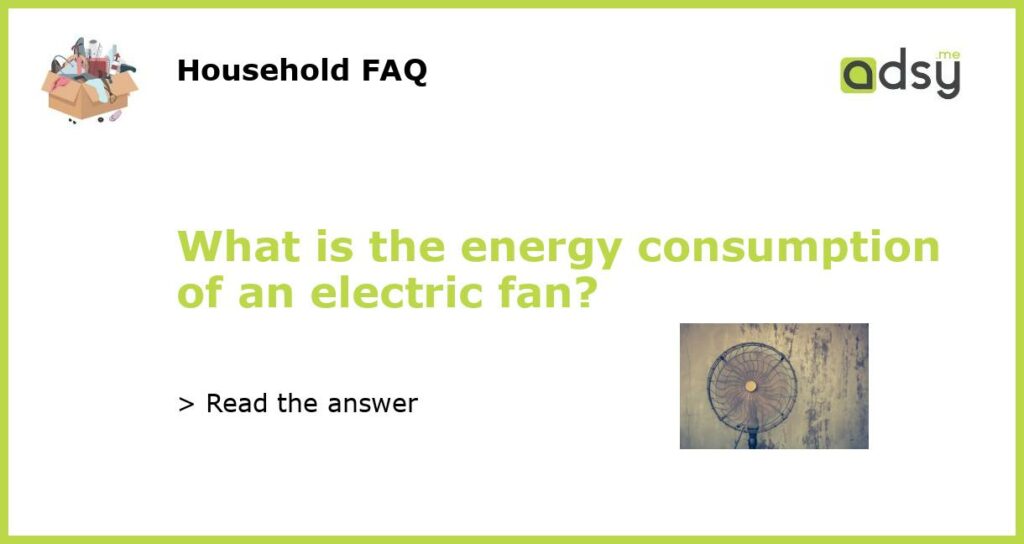The Energy Consumption of an Electric Fan
Electric fans are great for keeping us cool during hot and humid weather conditions. They come in different sizes, shapes, and designs to suit various needs. However, have you ever stopped to think about the energy consumption of an electric fan?
Understanding Energy Consumption
Energy consumption is a measure of the amount of energy used by a device over a specific period of time. For electric fans, energy consumption is measured in watts per hour (Wh), kilowatts per hour (kWh), or British Thermal Units (BTUs). The higher the energy consumption, the higher the energy bill you’ll receive at the end of the month.
The Energy Consumption of Different Types of Fans
There are numerous types of fans, each with a different level of energy consumption. Ceiling fans, for instance, have a low energy consumption rate of between 15 and 90 watts per hour, depending on the size and speed settings. Floor fans have a higher energy consumption rate of between 90 and 120 watts per hour, while window fans can consume between 40 and 60 watts per hour.
Calculating Energy Consumption
To calculate the energy consumption of your electric fan, you need to find out its wattage rating. This information is usually indicated on the fan’s label. Once you know the wattage rating, multiply it by the number of hours the fan is used per day and then by the rate charged by your electricity provider per kWh. For instance, if you have a 60-watt fan that runs for 6 hours per day and you’re charged $0.15 per kWh, the daily cost of running the fan will be $0.054 (0.06 x 6 x 0.15).
Ways to Reduce Energy Consumption
If you’re concerned about the energy consumption of your electric fan, there are several ways to reduce it. First, invest in an energy-efficient fan, such as those with an Energy Star label. These fans are designed to consume less power than their traditional counterparts. Also, consider turning off the fan when you’re not in the room as leaving it on will only waste energy. Finally, ensure that the fan’s blades and motor are well-maintained and clean as dirty and malfunctioning fans tend to consume more energy.






